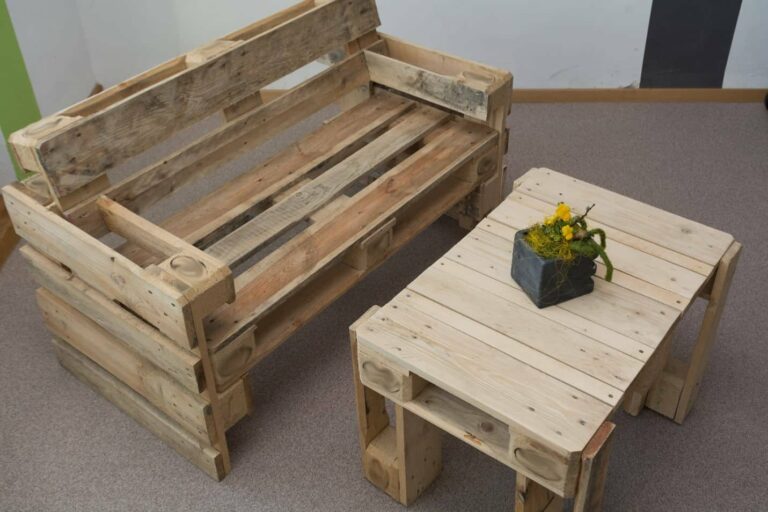Using Eco-Friendly Furniture In Commercial Retail: A Sustainable Solution
Is it possible to use environmentally friendly furniture in commercial retail showrooms and galleries? Definitely! In our current era, sustainability and environmental awareness are becoming increasingly important, leading to a surge in the popularity of eco-friendly furniture.
Businesses are understanding the significance of matching their values with their interior design decisions. Given the wide range of chic and environmentally conscious options on the market, integrating these sustainable pieces into commercial retail showrooms and galleries is not only achievable but also fashionable.
Let’s delve into the advantages and opportunities of incorporating eco-friendly furniture to craft striking and sustainable spaces that leave a positive impression on both customers and the environment.
Eco-Friendly Furniture In Commercial Retail:
Recently, many industries, such as retail, have been shifting towards sustainability and eco-conscious practices. One specific focus is utilizing eco-friendly furniture in commercial retail spaces. Can eco-friendly furniture maintain aesthetics, functionality, and shopping experience in these areas? Let’s discuss the benefits and challenges of using eco-friendly furniture in commercial retail settings.
The rise of eco-friendly furniture:
Over the past decade, there has been a notable shift in consumer preferences towards sustainable and environmentally friendly products. This shift has led to an increased demand for eco-friendly furniture options. Eco-friendly furniture is typically made from sustainable materials such as reclaimed wood, bamboo, or recycled plastic. These materials are sourced responsibly, reducing the strain on natural resources and minimizing waste.
Benefits of incorporating eco-friendly furniture:
Integrating eco-friendly furniture into commercial retail showrooms and galleries can offer several advantages. Some of the key benefits include:
- Sustainability: By choosing eco-friendly furniture, businesses can align themselves with sustainable practices and reduce their carbon footprint.
- Enhanced brand reputation: Embracing sustainability can improve a company’s image and attract environmentally conscious consumers. It showcases the brand’s commitment to social and environmental responsibility.
- Differentiation: The use of eco-friendly furniture sets a store apart from competitors, offering a unique selling proposition that can attract environmentally conscious customers.
- Health benefits: Eco-friendly furniture is often free from harmful chemicals and toxins, making it a healthier choice for both customers and employees.
Challenges of incorporating eco-friendly furniture:
While there are numerous benefits, there are also challenges that businesses may face when integrating eco-friendly furniture into commercial retail spaces. Some of these challenges include:
- Cost: Eco-friendly furniture can sometimes be more expensive than traditional options, which may pose a financial hurdle for businesses with limited budgets.
- Availability: The procurement of eco-friendly furniture may be more challenging than conventional furniture due to limited availability or sourcing constraints.
- Design limitations: Eco-friendly materials may have design limitations that restrict the range of styles and aesthetics that can be achieved, potentially impacting the overall ambiance of the retail space.
- Maintenance: Some eco-friendly materials may require specialized maintenance or care instructions, which could add complexity and cost to ongoing maintenance routines.
Overcoming the challenges:
While there may be challenges in incorporating eco-friendly furniture in commercial retail showrooms and galleries, these obstacles can be mitigated with careful planning and consideration.
Budgeting and cost analysis:
To overcome the financial challenges associated with eco-friendly furniture, businesses need to conduct a thorough cost analysis.
This analysis should include comparing the initial investment and potential long-term cost savings associated with eco-friendly options.
By identifying areas where savings can be realized and making informed decisions, businesses can align their sustainability goals with their financial capabilities.
Collaboration with sustainable suppliers
One way to address availability issues is by collaborating with sustainable furniture suppliers. Establishing relationships with companies that specialize in eco-friendly furniture can ensure a consistent supply of environmentally conscious options.
These suppliers often have access to unique materials and can guide how to achieve the desired aesthetic while maintaining sustainability principles.
Design and aesthetics
While some eco-friendly materials may have design limitations, businesses can work with architects, interior designers, and furniture manufacturers who specialize in sustainable design.
These professionals can help strike a balance between aesthetics and sustainability, ensuring that the retail space remains visually appealing while incorporating eco-friendly elements.
By leveraging their expertise, businesses can create unique and captivating retail environments that attract customers.
Education and training
To address maintenance concerns, businesses can invest in educating their staff on proper care and maintenance practices for eco-friendly furniture.
This can include training sessions, informative materials, or even partnering with furniture manufacturers to provide guidelines.
By empowering employees with the necessary knowledge, businesses can ensure that eco-friendly furniture is well-maintained, retaining its quality and longevity.
The future of eco-friendly retail spaces
As sustainability continues to gain prominence, the use of eco-friendly furniture in commercial retail showrooms and galleries is expected to increase.
With advancements in technology and material innovation, the challenges associated with eco-friendly furniture are likely to diminish over time.
As more businesses embrace sustainability, the market for eco-friendly furniture will expand, making it more accessible and affordable for commercial retail spaces.
Eco-friendly furniture in action: Case studies
Harnessing the power of eco-friendly furniture, several businesses have successfully integrated sustainable elements into their retail showrooms and galleries. Let’s explore a few inspiring case studies:
1. Patagonia
Patagonia, a renowned outdoor apparel and equipment brand, is famous for its dedication to sustainability. Within their stores, they have included environmentally friendly furniture crafted from reclaimed wood and recycled materials. These furnishings not only reflect Patagonia’s core values but also elevate the shopping environment for their eco-conscious clientele.
2. IKEA
IKEA, a prominent provider of budget-friendly furniture, has successfully integrated sustainability into its product line. The brand showcases environmentally friendly furniture crafted from renewable resources in its stores and advocates for ethical sourcing methods. Customers appreciate IKEA’s dedication to sustainability, which boosts their brand image and draws in eco-conscious shoppers.
3. The Body Shop
The Body Shop, a cosmetics and skincare retailer, has long been committed to promoting ethical and sustainable practices.
In their stores, they use eco-friendly furniture made from recycled materials and incorporate elements like reclaimed wood to create a visually appealing and environmentally conscious shopping environment.
This approach helps The Body Shop reinforce its brand identity as a socially responsible company.
Faqs for Eco-Friendly Furniture In Commercial Retail:
Several eco-friendly furniture options can be used in commercial retail showrooms and galleries. These include furniture made from sustainable materials such as bamboo, reclaimed wood, or recycled materials. Additionally, furniture that meets certain certifications, such as Forest Stewardship Council (FSC) certification or Cradle to Cradle certification, can also be considered eco-friendly.
Yes, eco-friendly furniture can be just as durable as traditional furniture. Many eco-friendly furniture options are designed with durability in mind, using high-quality materials and construction techniques. It is important to choose reputable brands and manufacturers that prioritize both sustainability and durability when selecting eco-friendly furniture for commercial use.
Yes, eco-friendly furniture can often be customized to meet specific needs and requirements. Many manufacturers offer options for customization, including choosing the type of sustainable material, finishes, and dimensions. Customization allows for a tailored approach to ensure that the eco-friendly furniture aligns with the specific design and functionality goals of the commercial retail showroom or gallery.
Besides the obvious environmental benefits, using eco-friendly furniture in commercial retail showrooms and galleries can also help enhance the brand image. It demonstrates a commitment to sustainability and can attract environmentally conscious customers. Additionally, eco-friendly furniture is often built with non-toxic materials, contributing to better indoor air quality and creating a healthier environment for both employees and visitors.
Final Thoughts
eco-friendly furniture offers a viable option for commercial retail showrooms and galleries. By incorporating sustainable materials and manufacturing processes, businesses can showcase their commitment to environmental responsibility. With growing consumer demand for eco-conscious products, using eco-friendly furniture can attract environmentally conscious customers and enhance brand reputation. Moreover, the versatility and aesthetic appeal of eco-friendly furniture make it suitable for various design styles and retail settings. Embracing eco-friendly furniture in commercial spaces not only aligns with sustainable values but also contributes to a greener future. Can eco-friendly furniture be used in commercial retail showrooms and galleries? Absolutely, and it can be a rewarding choice for businesses seeking to combine sustainability and style.


